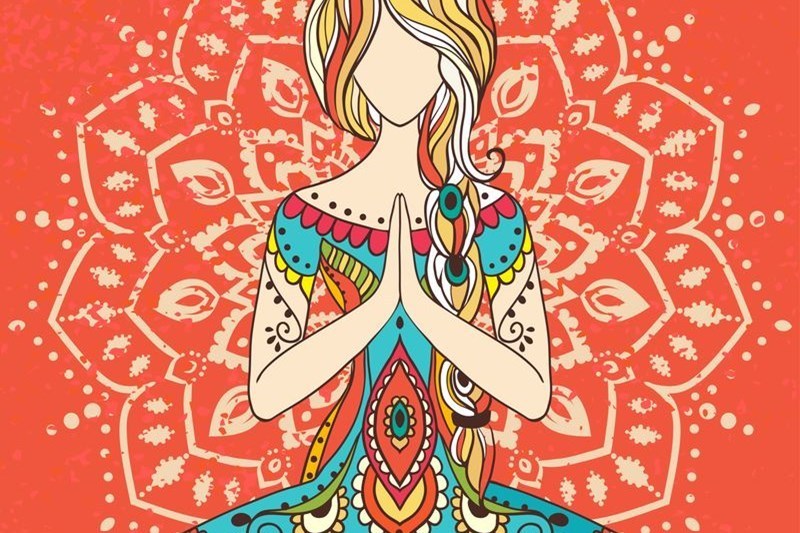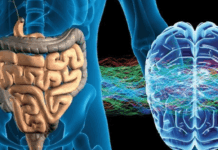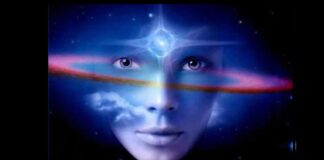
By Paul Harrison,
For more than 3000 years mantras (sacred sounds) have been chanted for the purpose of spiritual healing.
During the early period of Hinduism, spiritual gurus became fascinated by poetry and began to write sounds in sacred texts like the Rigveda. Those same sounds have echoed throughout the East all the way to today, and are now chanted by billions of Hindus, Buddhists and spiritualists the world over.
Today, mantras are chanted for myriad reasons. There are mantras to cure depression and anxiety, mantras said to create wealth, mantras used to attract wealth… for near every purpose there is a corresponding mantra. Yet despite the billions of people who use mantras, and the sheer range of their uses, the Western world has stubbornly turned a blind eye to this oldest of spiritual practices.
So what, precisely, do we truly know about mantras?
Yoga masters claim that mantras have the power to create chemical changes in the body. The argument is that the specific vibrational qualities of mantras create reverberations in the body that lead to changes on the molecular level.
We can understand how this works when we consider man’s relation to sound.
Our auditory faculty has evolved through millions of years to include specific constants that form the very foundations of our auditory composition. Many of the sounds we make today, like grunts and some syllables, have been used for millions of years, long before we became homo-sapiens.
Similar to the way birds use song to communicate information about the weather, we have used grunts and syllables to form our understanding of the world.
The reason why many of today’s words are onomatopoetic is because human vocals were created as an echo of nature. Early man used syllables as a way of echoing the sound of the thing they were trying to describe. Hence why “bob” (as in “bobbing up and down”) sounds like an object bobbing up and down in the water. “Crash”, “Bang”, “Honk”, and “Chime” are other examples.
As mankind has evolved we have moved away from onomatopoetic language. So it is that English is not nearly as onomatopoetic as Sanskrit, the latter being a much earlier language.
When we speak in Sanskrit we create sounds that are very closely related to the sounds of nature.
The sacred Sanskrit word “Om”, for instance, means “Universe” and we can hear an echo of the universe in the sound of the mantra. We get a sense of the open and infinite nature of the universe when we listen to this sound. “Om” is a very open sound. It seems to conjure thoughts of an open space, reconnecting us with the vastness of the universe.
To say that “Om” sounds like an open space, of course, means that it has auditory composition similar to the way sound vibrates in an actual open space. The quality of the sound is a recreation of the sound of the real thing.
What does it mean to sound like the real thing? It means that the sound of the mantra and the sound of an actual open space are very similar. In other words, when we recite “Om” we recreate the vibrational qualities of an actual open space, and we do so inside the body.
It is as though we are bringing that part of nature, that vast open space of “Om”, into our own being. Not only do we recreate that open space in an auditory and physical sense, we also recreate it in the mind.
When we recite mantras, we don’t simply make sounds. We meditate on them. To meditate means to focus consciousness on a certain space. When we meditate on “Om” we focus consciousness on the mantra itself. In other words, we place our consciousness inside the sound, inside “OM”, and, in turn, inside the open space that “Om” represents.
This is the science of mantras. And it is one of humankind’s oldest healing techniques. For millions of years we have recreated the vibrational qualities of nature using the voice. Mantras simply take it further. When we meditate on those primordial sounds, we place consciousness inside the sound, healing the mind by reconnecting it with those auditory representations of the natural world.
By changing the vibrational qualities of those sounds, we change the effect the sound has on the mind. The root chakra mantra “Lam”, for instance, grounds us and creates feelings of belonging, where “Ah” creates release, helping us to let go.
This is the power of Sanskrit mantras. They are a way of recreating the vibrational qualities of real-world events, objects, or spaces in the body, and then placing consciousness inside those sounds by meditating. Simply chanting a Sanskrit mantra puts us in-tune with positive vibrational energies that heal body, mind and spirit.
In virtually every system of spirituality the world has ever known, sound has been considered a direct link between humanity and the divine. The ancient mystery schools all taught their students the use of sound as a creative and healing force. |
About the Author
Paul Harrison is a meditation teacher and the author of TheDailyMeditation.com. His passion and purpose is to bring spirituality to a million people and to help make the world a more loving, more compassionate, kinder place. Read Paul’s complete guide to the mantrasand discover the healing power of sacred sounds.
Source: https://www.shift.is
Disclaimer: We at Prepare for Change (PFC) bring you information that is not offered by the mainstream news, and therefore may seem controversial. The opinions, views, statements, and/or information we present are not necessarily promoted, endorsed, espoused, or agreed to by Prepare for Change, its leadership Council, members, those who work with PFC, or those who read its content. However, they are hopefully provocative. Please use discernment! Use logical thinking, your own intuition and your own connection with Source, Spirit and Natural Laws to help you determine what is true and what is not. By sharing information and seeding dialogue, it is our goal to raise consciousness and awareness of higher truths to free us from enslavement of the matrix in this material realm.
 EN
EN FR
FR


























Thank you for the interesting post, people are starting to witness sound which some describe as the “Mantra of the Gods”, here is a great posting on it, this group gives out free personal mantras that have been energized by the Spiritual Hierarchy to do a specific task.
https://www.lightandsoundmeditation.com/spiritual-sound/